

我叔叔李邦训-台湾空军英雄 My Uncle's Photo and Squadron Information
http://www.youtube.com/watch?v=DOnSNzjE8ZM
我叔叔李邦训-台湾空军英雄 My Uncle's Photo and Squadron Information
From left to right: My aunt Li Bangqin, my father Li Bangding, my mother Doris Chen, my uncle Li Bangxun (1987)
从左至右: 姑姑李邦琴,父亲李邦定,母亲陈斗娥,叔叔李邦训 (1987年)
Folks:
This is a photo of my uncle when he received the Best Pilot Award from the Flying Tigers. For 50 years of military and civilian services, my uncle as a pilot had never crashed a single airplane. He had served in the Chinese Civil War, in WWII, in Vietnam War and various civilian airlines after he retired from the military. Indeed he had always served with distinction. He is my hero.
One amazing feat my uncle pulled was when he piloted a recon plane above the mainland, his plane was hit by a rocket from the communists. The fuel was leaking badly. But he managed to fly the plane safely to South Korea, saving a crew of seven. When he touched down on the runway, there was no single drop of fuel left. There are many stories like this.
I met my uncle again in Taipei this February when I attended the Human Rights and Beijing Olympics Forum. He is in his 80s and fragile with early symptoms of Alzheimer's disease. I wish him the best and regret that he had not written a memoir of his life.
Here I pay my tribute to my uncle Li Bangxun 李邦训: You are my hero and I will always respect what you have accomplished in your life. I love you very much.
Best. Kai Chen
Video link to my uncle's squadrons: Black Cat, Black Bat.
http://www.youtube.com/watch?v=DOnSNzjE8ZM
Other links to those Taiwan Air Force Squadrons:
http://en.wikipedia.org/wiki/Black_Cat_Squadron
http://www.zonaeuropa.com/20051102_1.htm
http://area51specialprojects.com/u2_blackcat_taiwan.html
http://www.taipeitimes.com/News/feat/archives/2007/07/10/2003368999
--------------------------------------------------------------------------------
黑猫中队与黑蝙蝠中队
黑猫中队与黑蝙蝠中队是冷战期间(1960s – 1970s)台湾空军的特种侦察机组。 它们的主要任务是定期飞入中国大陆领空搜集中共核子设施的情报。 U-2 和其它机型的侦察机是由美国国防部与中央情报局提供的。 在执行任务中有数名台湾空军飞行员为自由事业殉职。他们的不朽业绩将永垂青史。
我叔叔李邦训曾是黑蝙蝠中队的飞行员。 他在历经风险的侦察任务中立下了不朽的功绩。 我希望今天所有热爱自由的人们,尤其是中国大陆和台湾的人们会铭记他们的功勋。 --- 陈凯
Pilots bring old secrets to light
The existence of the Black Bats Squadron, which flew numerous clandestine missions in the Korean and Vietnam wars in support of the US, is only now being recognized.
By Shelley Shan
STAFF REPORTER
Tuesday, Jul 10, 2007, Page 14
Eighty-two year old Tai Shu-ching, who claims to have flown 78 secret missions over China in the 1950s and 1960s, displays records from his glory days.
In the Military Dependants Village Museum in Hsinchu City, 85-year-old veteran Liu Chiao-chi (劉教之), a member of the 34th Squadron in the ROC Air Force, was telling a visitor of the dangers and hardship he experienced when he was still in service.
While talking, Liu pointed the different travel routes he had flown on a map and to photos of pilots he recognizes. He also explained in detail the significance of the squadron's emblem - a bat with seven stars - and explains how this special squadron was formed.
"Not too many knew about this," Liu told the Taipei Times. "The Ministry of Defense even acted like we'd never existed and tried to dissociate themselves from this part of history."
Liu's disappointment may have been shared by other members who used to serve in this particular air force squadron, whose sacrifices have been ignored by the government and were almost unknown by their contemporaries.
A Bit of History
In the early 1950s, when the US was engaged in the Korean War, the US government recognized the strategic role that Taiwan could play and decided to work more closely with Taiwan.
The Nationalist Government in Taiwan at the time had its own agenda, with President Chiang Kai-shek (蔣介石) still hoping to one day retake China. For this, he would need US military aid.
A secret cooperation between the two began through the establishment of Western Enterprises Inc in Taipei, which was composed mainly of experienced combat and intelligence specialists from the Central Intelligence Agency (CIA). The purpose was to facilitate the provision of advanced armaments and personnel training from the US to Taiwan.
Some of the local trainees eventually became members of the 34th Squadron, which was charged with flying secret low-altitude reconnaissance flights over China. Special cameras were installed on their planes, allowing them to capture photos of China's military infrastructure. As they would only be sent for missions at night, they were nicknamed the Black Bats Squadron (黑蝙蝠中隊).
The Bats reported directly to Taiwan's Air Force Intelligence Administration, an organization independent of the Air Force's chain of command.
General I Fuen (衣復恩) was the chief of the administration and the main coordinator between the US and Taiwan in this project. As the actions taken by the Bats were highly classified, General I was granted the authority to report directly to Chiang Kai-shek (蔣介石) and his son Chiang Ching-kuo (蔣經國).
Members of the 34th "Black Bat" squadron listen to a briefing by commanders in a photo from 1959.
Each member of the squadron was asked to write his will before he began to fly missions. Each also was required to sign a document demanding they keep all their actions secret.
Between 1955 and 1968, the Bats flew 838 missions, during which 142 officers were killed.
In the documentary The Secret Hidden in the Sky of Taiwan (台灣天空的祕密), director Ting Wen-chin (丁雯靜) located some members of the Bats Squadron and persuaded them to tell their story.
Pilot Chu Cheng (朱震) remembered being on a mission one night, when Chinese planes got a lock on him soon after the team had completed their task.
"They were following us closely and I couldn't fly any lower to the ground," Chu recalled. "The situation left me with no time to think about questions of life and death; I only knew I needed to find ways to dodge."
Chu survived - but only because his attacker used up all his bullets.
The first-hand information the squadron collected enabled the US to deliver an effective counterstrategy against China's military advancement.
The Creation of China Airlines
In the build up to the Vietnam War in the early 1960s, the 34th Squadron was also dispatched in support of the US. To avoid controversy in the international community, the Bats needed a new identity. China Airlines, Taiwan's first airline carrier, was born under these circumstances.
Wang Chi-cheng (汪積成), the former general manager of the China Airlines, said in Ting's documentary that the CIA had appropriated quite a few aircraft for the airline. He said these aircrafts had first to be "sterilized," meaning that staff had to remove all identifying marks on the plane.
"In those days, China Airlines was really just a top-notch D-squad in the air force," Wang said.
Liu was one of the Bats who worked as a member of China Airlines' personnel. He was once in charge of transporting special US Army combat teams to North Vietnam. The facade of a civil airliner, however, didn't free his team from the threat of relentless attack. Until this day, Liu can still remember the night when a bullet passed through his cabin and almost hit him in the neck.
During the Vietnam War, the airline lost 10 airplanes and 49 personnel.
Following a successful nuclear test by China in 1964, the Chi Long Project (奇龍計畫) was launched to send Bats to Xinjiang Province - where nuclear tests were executed - to gather information.
Huang Wen-lu (黃文騄) recalled the 13-hour flight experience on May 17, 1969, when his team was ordered to drop a large nuclear dust detector in the target zone.
"You only have one chance to do it right, and you could not afford to miss," he said.
Based on Huang's descriptions, a small bag of explosives would be hidden in the parachute attached to the detector, which would explode soon after the detector hit the ground, so that no one could identify it easily.
Two high sensitivity antennas were set up in Huko (湖口), Hsinchu to receive the data transmitted by the detector. The project allowed US and Taiwan officials to track China's progress in developing nuclear weapons.
Buried memories
The Bats' operation ceased after the Vietnam War ended in 1975. Despite the sacrifices, the records on this special unit remained unknown to most people in Taiwan. During the 1960s, it was even treated as a forbidden subject after I Fuen was detained for three years on unknown charges.
Even after I Fuen and some of the Bats passed away, Taiwan's Ministry of National Defense has yet to declassify documents related to the operation of the 34th Squadron.
And while the US has already declassified part of the records in 1992 and made it available for public access, statements or terms indicating the cooperation between Taiwan and US have all been censored.
Some of the Bats, however, have begun to disclose logs, photos and personal journals they kept when they were still in the service. Their effort to make people understand and recognize this part of history has gained support from the Hsinchu City Government and former Taipei City cultural affairs department commissioner Lung Ying-tai (龍應台).
"Some people said we agreed to do this to protect the Chiangs (蔣家)," Liu sighed, "We were flying every night to monitor if there is any noteworthy military activity in China so that we could set up a rapid response. We were actually protecting Taiwan!"
Lu said it was time that this history became known.
"Chiang Ching-kuo once said to us that we couldn't tell what we were doing. We are unsung heroes. All this would be made known to people some day. Now it's the time."
-------------------------------------------------------------------------------
Taiwan's spy pilots honored for Cold War work
The Black Bats' major function was to drop Taiwanese spies to incite mainlanders to rise up against communist rule — an enterprise that almost invariably ended in failure..
By Annie Huang, Associated Press
HSINCHU, Taiwan — They gathered quietly on a rainy night in the northern Taiwanese city of Hsinchu, six survivors of a secret cadre of pilots who risked their lives against the communist enemy during the darkest days of the Cold War.
Known as "The Black Bats," they say they were working for the CIA, a claim backed up by a photo of them posing with the then CIA station chief. Between 1953 and 1967 they flew more than 800 sorties over the Chinese mainland, dropping agents, testing radar responses, even collecting air samples from suspected nuclear test sites.
After decades in the shadows, they are now coming forward, encouraged by the planned establishment of a museum honoring their exploits in this high tech center that was once the base of their operations.
Though their main mission — laying the groundwork for an anti-communist insurrection — unquestionably failed, they are seen by many on this democratic island of 23 million people as national heroes, because they helped cement a crucial connection with the United States when their homeland needed all the big power help it could get.
The Black Bats' story first emerged in Taiwan in 1992 when China repatriated the remains of 14 crewmembers who died when their plane was shot down over the mainland in 1959. A few books on their exploits were published in subsequent years, including one by the Taiwanese Defense Ministry detailing their clandestine China overflights.
But the Bats had remained largely anonymous until the gathering early in June at Hsinchu's National Tsing Hua University, where hundreds of Taiwanese observed a minute of silence for the 148 Black Bats who didn't return from their missions and paid an emotional tribute to the few surviving members of the group.
"We owe our national and social stability to them, but we had never thanked them in public," said Tsing Hua humanities professor Lung Ying-tai.
The Black Bats were formed in 1953, just four years after Chiang Kai-shek's Nationalist forces were defeated on the mainland by Mao Zedong's communists. That loss precipitated their wholesale retreat to this leaf-shaped island 100 miles off the Chinese coast.
During his more than 20 years in power on the mainland, Chiang had maintained an uneasy relationship with the United States — many historians accuse him of widescale corruption — but once on Taiwan, Washington embraced him as an anti-communist bulwark.
The CIA was a major link in the new Taiwan-U.S. connection, Black Bat veterans say, providing the group with P2V, B17 and B26 aircraft to carry out their mission of scoping out the communist enemy, and inserting agents on the mainland to promote an anti-communist insurrection.
The veterans proudly display photographs taken with Ray Cline, then the agency's Taipei station chief, and show other memorabilia supporting their claim of CIA sponsorship.
"There's no doubt about the cooperation between the Black Bats and the CIA," said Tseng Wen-shu, who helped organize an exhibition about the Bats at a municipally sponsored Hsinchu military museum.
A 2004 book co-authored by CIA Taiwan veteran James Lilley says the agency used aircraft to insert Taiwanese agents into the mainland, though it does not mention the Bats specifically.
The CIA did not respond to an e-mail asking about its connection to the group.
Seventy-seven-year-old Chu Chen, one of about 10 surviving Black Bats pilots, said crews were trained in Taiwan by Americans he later learned were CIA employees. Like others in the group, he kept his exploits secret until recently — even from members of his own family.
"If we had disclosed anything, we could have been shot as intelligence agents leaking secrets," he said.
Taiwanese defense expert Fu Ching-ping said the CIA purposely hid its connection to the Black Bats because of fear of being implicated in military forays against the mainland.
"They employed the Taiwanese pilots so they could deny any connection if the mission went wrong," he said.
The Black Bats' major function was to drop Taiwanese spies to incite mainlanders to rise up against communist rule — an enterprise that almost invariably ended in failure.
No figures are available on how many spies were dropped, but surviving Black Bat pilots say few ever returned to Taiwan.
Former navigator Chou Li-hsu recalled numerous infiltration missions and extolled the bravery of the agents.
"They tossed their weapons down first and then they jumped," he said.
Several former pilots also recounted close encounters with pursuing communist planes, which narrowly missed shooting them down.
Eighty-two-year-old Tai Shu-ching said that in five years of Black Bat service he flew 78 sorties over China, including one in 1960 in which eight communist airmen were killed when their planes crashed into a mountain during a futile chase of Tai's P2V.
"Unarmed we broke through the Iron Curtain in the darkness of the night," he said. "Each time, we were confident that we could get the mission accomplished."
Tai's 1960 encounter with his communist pursuers is described in detail in Fights to Protect the Motherland's Airspace, a book published in 2001 by China's People's Liberation Army.
Besides inserting agents, Black Bat aircraft also flew near Chinese radar installations to obtain their electronic signatures in preparation for possible American bombing missions of the mainland — missions that never took place.
Crews also helped the U.S. monitor Chinese nuclear weapons programs in the early 1960s by collecting air samples from suspected Chinese test sites.
Chu, the former pilot, said he flew his B17 on one such mission, but only learned its true purpose after the fact.
A Taiwanese defense expert, Andrew Yang of Taipei's Council of Advanced Political Studies, said programs like the Black Bats provided Washington valuable intelligence about China's secretive nuclear weapons program when the mainland was largely isolated from the rest of the world.
"Taiwan was an important source of information for the U.S. ... enabling it to avoid taking actions arising from misjudging the situation," he said.
In parallel with the Black Bats, another Taiwanese squadron — the Black Cats — flew surveillance missions over the mainland throughout the 1960s. These were high-altitude flights using U2 spy planes to photograph military establishments. At least five of the U2s were shot down by Chinese missiles before the squadron was disbanded in 1974.
Taiwan's Defense Ministry finally recognized the "important contributions" made by both the Cats and the Bats following the Hsinchu gathering.
"They ... provided crucial strategic and military intelligence that helped stabilize the Taiwan Straits situation," the ministry said in a statement. "We will never forget this chapter of our history."
Copyright 2007 The Associated Press. All rights reserved. This material may not be published, broadcast, rewritten or redistributed.
-------------------------------------------------------------------------------
http://www.youtube.com/watch?v=sEbgB6X6S5c
http://www.youtube.com/watch?v=t6Lp4w8wyy0&feature=related
真正的人-“我只走我的路”- 我爱的歌 "I Did It My Way" by Frank Sinatra
http://www.youtube.com/watch?v=sEbgB6X6S5c
Folks:
I paste this link here for you to listen to Frank Sinatra's "I did it my way". I love this song for it reflects my life and my soul.
Enjoy it. Best. Kai Chen
http://www.youtube.com/watch?v=sEbgB6X6S5c
http://www.youtube.com/watch?v=t6Lp4w8wyy0&feature=related
-----------------------------------------------------------
The lyric of the song:
Frank Sinatra Lyrics
My Way Lyrics
http://www.lyricsondemand.com/f/franksinatralyrics/mywaylyrics.html
Complimentary "My Way" Ringtone
(P. Anka, J. Revaux, G. Thibault, C. Frankois)
[Recorded December 30, 1968, Hollywod]
And now, the end is here
And so I face the final curtain
My friend, I'll say it clear
I'll state my case, of which I'm certain
I've lived a life that's full
I traveled each and ev'ry highway
And more, much more than this, I did it my way
Regrets, I've had a few
But then again, too few to mention
I did what I had to do and saw it through without exemption
I planned each charted course, each careful step along the byway
And more, much more than this, I did it my way
Yes, there were times, I'm sure you knew
When I bit off more than I could chew
But through it all, when there was doubt
I ate it up and spit it out
I faced it all and I stood tall and did it my way
I've loved, I've laughed and cried
I've had my fill, my share of losing
And now, as tears subside, I find it all so amusing
To think I did all that
And may I say, not in a shy way,
"Oh, no, oh, no, not me, I did it my way"
For what is a man, what has he got?
If not himself, then he has naught
To say the things he truly feels and not the words of one who kneels
The record shows I took the blows and did it my way!
Yes, it was my way.






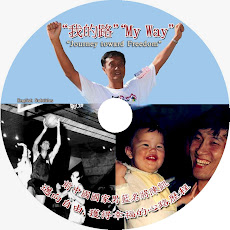







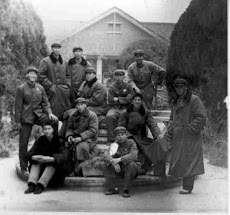

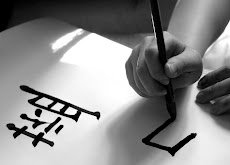
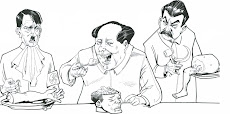
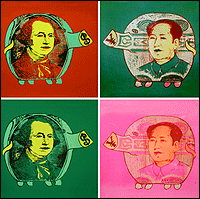
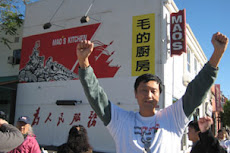















5 comments:
hey man. its great to see that these memories are being kept alive. My grandpa was captain of the black bats too. He got shot down in China with his crew. China just returned thier ashes to Taiwan a couple years back. Keep up the good work brother.
Yes thank you for keeping the story alive. From 1961-1965 my father, US Navy Aviator, was instructor to the 34th Squadron. I returned with them for a special reunion in 2001 and met many of those officers thatI knew as a small american boy growing up on Taiwan. Here is a link to show photos taken during that special time.
http://www.artwinn.com/Taiwan.html
Best regards,
Art Winn
awinn@msn.com
Hi Kai Chen.
From 1961-1965 my father US Navy Pilot Jim Winn, served as a training officer to the 34th Squadron @ Hsinchu. In 1999 our family returned to a special reunion hosted by our friends and General I Fuen. Here is a link to some photos taken at that time:
http://www.artwinn.com/Taiwan.html
Best regards,
Art Winn
awinn@msn.com
1999 Reunion of the 34th Squadron. Grand Hotel. Taipei Taiwan.
http://www.artwinn.com/Taiwan.html
Had one more to post...
General and Mrs I with Captain and Mrs Winn. 1999...2 weeks after a major earthquake in Taipei.
http://www.artwinn.com/101.jpg
Post a Comment